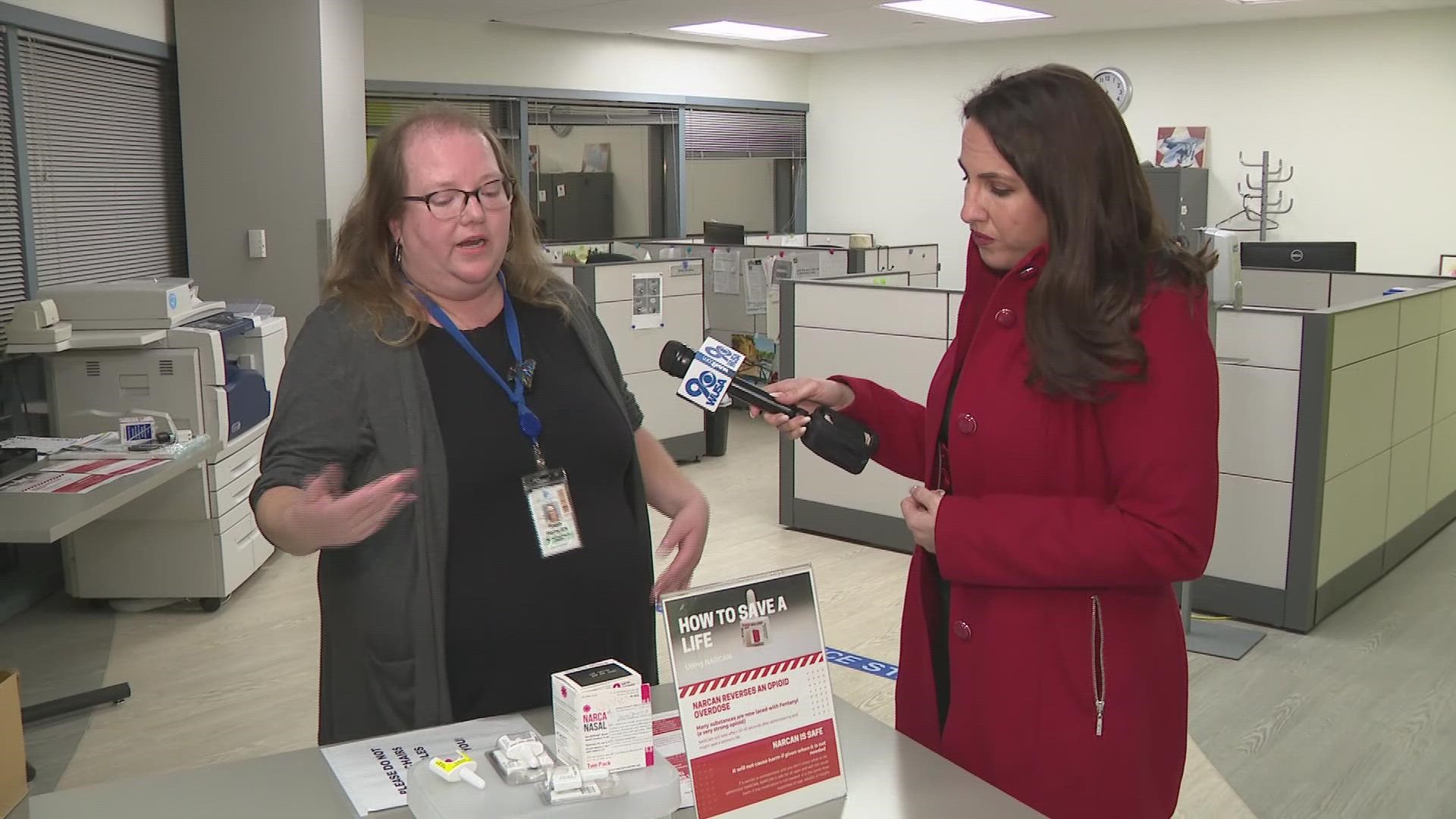WASHINGTON — The overdose-reversing drug naloxone should be made available over the counter to aid the national response to the opioid crisis, U.S. health advisers said Wednesday.
The panel of Food and Drug Administration experts voted unanimously in favor of the switch after a full day of presentations and discussions centered on whether untrained users would be able to safely and effectively use the nasal spray in emergency situations.
The positive vote, which is not binding, came despite concerns from some panel members about the drug’s instructions and packaging, which caused confusion among some people in a company study. The manufacturer, Emergent Biosolutions, said it would revise the packaging and labeling to address those concerns. The FDA will make a final decision on the drug in coming weeks.
Panel members urged the FDA to move swiftly rather than waiting for Emergent to conduct a follow-up study with the easier-to-understand label.
“There’s perhaps a far greater risk of delaying the availability of the product given the climate of this crisis and its devastating consequences,” said Maria Coyle, a pharmacy professor from Ohio State University, who chaired the panel.
The prefilled nasal device, Narcan, is the leading version of the drug in the U.S., which is also available as an injection. If FDA approves, Narcan would be the first opioid treatment to make the regulatory switch to a non-prescription drug.
The potential move represents the latest government effort to increase use of a medication that has been a key tool in the battle against the U.S. overdose epidemic that kills more than 100,000 people annually. The decades-old drug can counteract the effects of an opioid overdose in minutes.
Narcan is already available without a prescription in all 50 states, where state leaders have issued standing orders for pharmacists to sell the drug to anyone who asks for it. But not all pharmacies carry it and those that do must keep it behind the counter. Also, the stigma of opioids can discourage people from asking for the drug.
“We believe that nonprescription naloxone may help address these barriers,” said FDA's Dr. Jody Green, noting the switch would allow the drug to be sold in vending machines, convenience stores and supermarkets.
Emergent presented results from a 70-person study designed to show that people of various ages and backgrounds could quickly and correctly understand how to use the device in an emergency. About a third of people in the study had low reading ability, a group that FDA said should have been larger.
FDA staffers also cautioned that a number of participants had trouble following the directions, in part because of the way the multi-step instructions were laid out across two sides of the carton, FDA noted.
“Where is step one?” one participant asked, according to interview transcripts from the study presented by the FDA.
Emergent said it plans to move all the directions to a single panel and add pictograms, per FDA's suggestion.
Despite flaws in the original packaging, the panel of 19 pain and medical education experts expressed confidence that the product could be used effectively by most adults and adolescents.
“Perfect should not be the enemy of the good and the evidence we saw today provides clear indication that the drug can be used without the direction of a health care provider,” said Dr. Brian Bateman of Stanford University.
Government officials hope that moving naloxone beyond the pharmacy counter will boost sales, with the potential to lower costs. Currently the drug can cost $50 for a two-pack, when not covered by insurance.
Community advocates and organizations that favor distributing the drug welcomed the potential approval of an over-the-counter version.
“It’s going to make a tremendous impact on how people view the medication,” said Sheila Vakharia, deputy director of research and academic engagement at the Drug Policy Alliance. “It will help to destigmatize it and make people know it’s safe and easy to use.”
But Maya Doe-Simkins, a co-director of Remedy Alliance/For The People, worried that an over-the-counter version of Narcan could also lead to a perception that it’s better than other forms of naloxone.
“We have some trepidation about how companies that have ‘over-the-counter’ products may misrepresent injectable products,” said Doe-Simkins, who has long advocated for an over-the-counter version.
U.S. overdose death rates began steadily climbing in the 1990s, driven by painkillers. Waves of deaths followed, led by other opioids like heroin and — most recently — illicit fentanyl. Nearly 107,000 Americans died of drug overdoses in 2021, an all-time high, though recent data suggests deaths may be plateauing.
Gaithersburg, Maryland-based Emergent Biosolutions makes most of its money from medical products purchased by the federal government for the Strategic National Stockpile, including drugs and vaccines against anthrax.
In 2021, the company came to the public's attention for its disastrous handling of COVID-19 vaccine production for Johnson & Johnson and AstraZeneca. Contamination problems at the company’s Baltimore plant ultimately forced the drugmakers to discard the equivalent of hundreds of millions of vaccine doses.
___
Associated Press writer Geoff Mulvihill in Cherry Hill, New Jersey, contributed to this story.
WATCH NEXT: How to administer Narcan during an overdose

